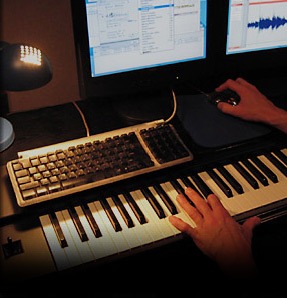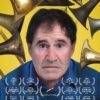
Sound Design
Written by Chris Anderson | Posted by: Anonymous
To some, it’s one of those terms that we hear bandied about, like some magical ingredient that might be just the thing needed for a film, like a drop of catalyst that makes the whole cloudy solution become clear. Sound design is one of those terms that came into heavy use in the go-go ‘80s, when the title of sound designer was something a lot of sound editors and mixers started applying to their job descriptions in an effort to seem more creative and cutting edge than the shop down the street. But what is it, really?
Sound is the third dimension in narrative film — if used properly, it should help lend breadth and depth to the story at hand, generally without calling attention to itself while it does so. Sound design is the process of considering and planning the sound treatment as the reinforcement of the storytelling in a production. Sound is linear, so to be perceived as anything coherent, it requires time and air to be fully realized. Compare that to film, where one can slow down, speed up, or even freeze an individual frame of the action to examine.
In the pre-digital era, sound editors would be handed sheets of cataloged sound effects ("pull sheets") and a list of film counter addresses for where these sound effects should be placed, and all of this was watched over by the supervising sound editor. None of this was terribly creative for the sound supervisor, and it was a lot like assembly-line work for the underling sound editors. Any "vision" to be realized in the soundtrack was that of the supervisor, but it was often a paint-by-numbers affair, and part of it had to do with the process of dubbing, editing and synchronizing mag film, a tedious process in and of itself.
What is a Sound Designer?
We ultimately have Walter Murch to thank for the title of sound designer in film sound, as he was the first to apply the moniker to himself after the experience of putting "Apocalypse Now" together. After trying on many titles ("sound collagist", anyone?), he went with sound designer, and history was made and further ground was broken on what was already well on its way to being a ground-breaking film. These days, there are many different types of sound designers out there, from web and game developers to theater sound folk, all the way to DJ’s, performance artists and feng shui interior decorators. Obviously, we need to narrow it down a bit here…
For our purposes, sound design is the aesthetic treatment and consideration of sound in the filmmaking process. All of us post-production sound types in the field are ultimately sound designers, as we’re always required to make those aesthetic decisions — it’s not just essential to the job at hand, but to our continued success as sound professionals as well as the success of the productions we work on. A sound editor who is not a sound designer these days is something like a musician not knowing what notes are. Where the process used to be more segregated, in no small part due to the technology available at the time, we can now perform multiple tasks (editing and mixing simultaneously) in less time on the same workstation now. The result is that there can be more interplay between the sound editors, the supervisor and the other crafts now, with the result being that the process is more adaptive, collaborative and creative than was ever possible in days of yore.
When to Use a Sound Designer
The bottom line for the filmmaker is that it’s never too early to involve a sound designer in the process, so find one, get them a script and include him or her in your plans now. Chances are, they’ll have some good ideas for you, and they might get you thinking about some of your setups differently. Get the sound designer in a dialog early on with your location recordist — this is supposed to be a collaborative process, and their combined expertise might help you avoid some potential problems later on.
Once wrapped, get organized and get an assessment on the quality of the dialog first, and try to determine if there are there problems in the track that might require dialog replacement. Will your wild lines cover you, or lines from other takes? Exhaust all options before going forward with replacing the dialog in looping or ADR (Automated Dialog Replacement) sessions, as it’s a tedious and expensive process that almost always ends in compromise. Just what the producer wants to hear, right? Actors typically hate it because it’s hard for them to get back to that place mentally and emotionally, particularly in the sterile environs of the recording studio. It can be very difficult to match performance and acoustics to the rest of the dialog, and it requires coordinating a lot of schedules (actors, directors, studios) for something that’s been done already.
At this point, the first of what will be several spotting sessions should be taking place between the sound designer, composer and the director, to determine where music cues will happen and how the sound design will work with that. It’s a kind of strategy meeting, where turf is carved out between music and sound design, and a plan for coordinating the work of both is formulated. The sound designer leaves this meeting with a clear sense of the director’s vision, as well as the composer’s take on the project, and will communicate these ideas to the rest of the sound editing crew, where more spotting sessions will need to take place.
It helps to break out sounds by category now and deal with them as groups: ambient sounds, hard & soft sound effects, and Foley. Ambient sounds are largely descriptive, in that they help establish a place and/or setting for the scene. This would include sounds like bird tweets and traffic sounds outdoors, background crowd sounds and other non-sync sounds. Hard effects are typically synchronous sounds to match an action on-screen, or what us sound geeks refer to as "see a dog, hear a dog".
Foley effects are named for one Robert Foley from the early days of film, where it was discovered that it was often far easier to "perform" some sounds in sync with the action on-screen than it was to try and shoehorn library sounds to fit a specific action — like footsteps, for example. Certain other sounds might get covered as Foleyed effects that one might not guess, however, such as the sound of explosions, clothing movement and rustles (to add a little natural sound to help hide those looped lines), door slams, and of course, the old cliché of using coconut shell clomping for horse hooves.
How Sound Design Works
The real design aspect of sound editing becomes this: give everything its own sonic space and build sounds in a way that enhances the picture. Sounds easy, doesn’t it? Well, consider that there are as many different approaches to making a soundtrack work as there might be sound designers, and you start to realize the implications at work here. Let’s take a simple scene — a two-shot with a man and a woman talking to each other near a busy city street. We’ll assume the sound department did their work and the dialog is clean, with minimal street noise leaking into the mics of this couple, so we need to fill the scene out a bit now.
Try this little sonic exercise next time you find yourself on or near a busy city street — close your eyes and let sound happen around you, dissecting in your mind all of the individual sounds you’re hearing. Hopefully, you weren’t driving or standing in traffic, but really listening to the world around you. How would you re-create it? Provided you had that palette of sounds to work with, how would you place them around the dialog track? Horn honks and noisy motorcycles going by are real enough, but (now that you have this freedom) wouldn’t you want to manipulate these sounds to work around words instead of during them?
Lastly, ask yourself which of these sounds might help underscore the content of the conversation taking place. Is an animated, angry conversation? Try some sirens, horn honks, or maybe some off-screen jackhammers to help underscore the conflict between them. Are they in love? Minimize the traffic and emphasize some happy-sounding birds tweeting. There are nearly endless variations available to you to help inflict an emotional content on this same locale, simply through the selection of a different ambience track.
Once assembled, you’re ready to consider the mix. In narrative filmmaking, the dialog (when it’s happening) is the most important thing to hear in the final mix, so it’s something to consider when building your other tracks out — keep potential interferences between sound effects and dialog to a minimum, make sure your sound design supports the visual and the story rather than detracts from it, and stay tuned for the next in the series, when we concentrate on making all these elements work together.
Also see: Part II of this article.










